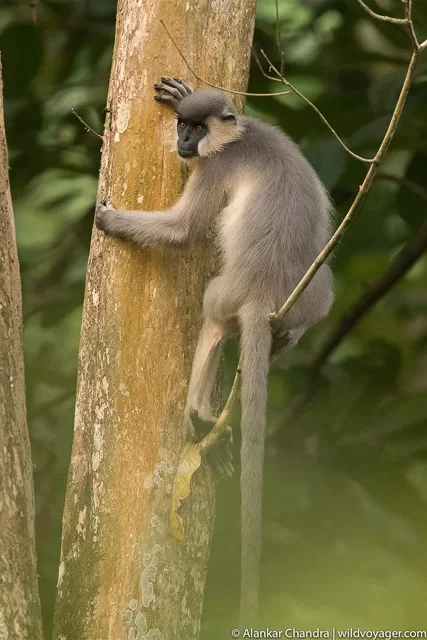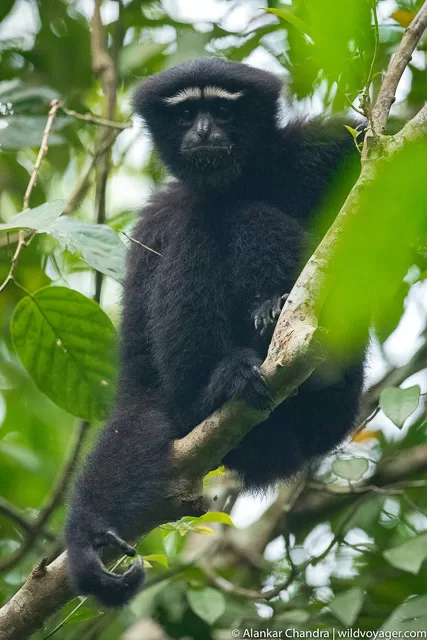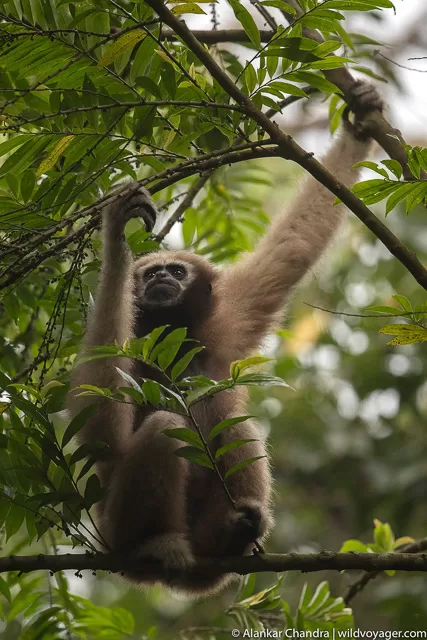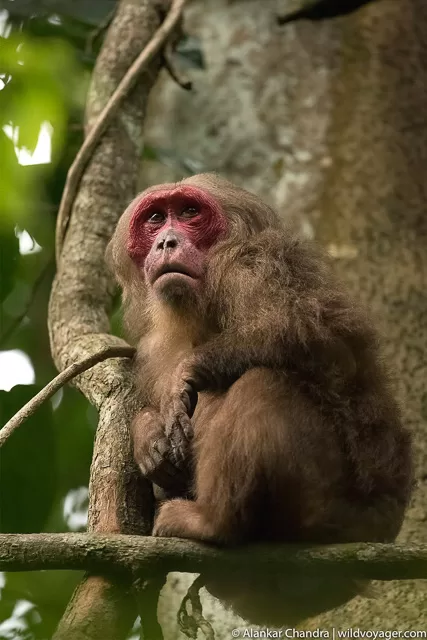About
Top Experiences
Type of Journey
Subscribe to newsletter and stay updated
Read about our travel expeditions, new destinations, new pictures, latest trip schedules
The Hoolock Gibbon is of two types – Western Hoolock Gibbon, otherwise known as the Hoolock hoolock, and the Eastern Hoolock Gibbon, otherwise known as Hoolock leuconedys. If you’re a wildlife enthusiast, you probably already know that despite being popularly known as India’s only ape species, the Western Hoolock Gibbon is endangered, as per the IUCN Regional Red List. These endangered animals can be visited at the Hoollongapar Gibbon Sanctuary, in Jorhat, Assam.
The North-eastern states of India are where a major chunk of their population thrives, however around a hundred of these apes are protected and preserved at the Sanctuary. A jungle gymnast, owing to its long arms, this tailless primate can be found swinging from one tree to another, in the expanses of the evergreen forest. If you wish to catch the gymnast at its most natural state, Hoollongapar Gibbon Sanctuary is the right place to be. There are seven species of primates, one of them being the precious Hoolock Gibbons. Not only will a visitor get a chance to observe the Gibbons lazing around and frolicking, but also all the other species.
OVERVIEW
Location: Jorhat District, Assam, India
Nearest Airport: Dibrugarh airport
How to reach: 3.5 hours from Dibrugarh airport
Famous for: Endangered western hoolock gibbons
7 species of apes
Best time to visit: November to March
WHAT TO SEE
Mammals: northern pig-tailed macaque, eastern Assamese macaque, stump-tailed macaque, Bengal slow loris, Indian rhesus macaque, capped langur, hog deer, sambar, porcupine, jungle cat, large Indian civet, small Indian civet, common palm civet, himalayan giant squirrel, hoary-bellied squirrel, Indian elephant, marbled cat, leopard cat, common mongoose, common Indian mongoose, Indian fox, jackal, wild boar
It’s easy to differentiate between the male and female Hoolock Gibbons. While the males are coal black with a stark white brow, the females are a beautiful copper-tan. They are of the same size approximately, so the obvious distinction is the color. The jungle calls can be heard well if one listens attentively.
Hoolock Gibbons make only one part of the seven species that inhabit the Sanctuary. The others are Capped Langur (Trachypithecus pileatus), Assamese macaque(Macaca assamensis), Pig-tailed Macaque(Macaca Leonina), Rhesus Macaque (Macaca Mulatta), Stump-tailed Macaque(Macaca arctoides) and the north-eastern special- Bengal Slow Loris (Nycticebus Bengalensis)

To see the nocturnal Bengal Slow Loris, you’ll need special permission as the Sanctuary closes at six in the evening. Apart from the Bengal Slow Loris, all the other primates can be spotted while taking a long walk in the Sanctuary. There’ll be a guide to help you and answer your queries every step of the way. If you’re not able to spot the primates, the guide can navigate you to the deeper parts of the forest for better visibility.

It isn’t just the primates that will make you gasp in awe, you’ll also spot some exquisite butterflies along the railway track, such as the Common Nawab, Common Tit, Dark Archduke, Himalayan Rusty Sailer, Water Snow Flat, Fluffy Tit, Himalayan Black Vein Sergeant and Blue Baron. Since you’ll be exploring near the railway tracks, it’s best to follow the footsteps of the guide. You might even get a glance at the Malayan Giant Squirrel, Blue Whistling Thrush, and Abbott’s Babbler. Make sure to not miss the gigantic earthworm mounds.

Since Gibbons are the primary attraction for wildlife enthusiasts and tourists alike, it’s best to visit the Sanctuary early in the morning as Gibbons is most energetic during that time of the day. The Sanctuary will be open till dusk and you can take your sweet time observing the primates, butterflies, etc.

Going sometime before ten in the morning would be the best, because after that Gibbons start to slow down and get lazier. You can also visit this Sanctuary from Kaziranga National park; it could be a half-day endeavor.